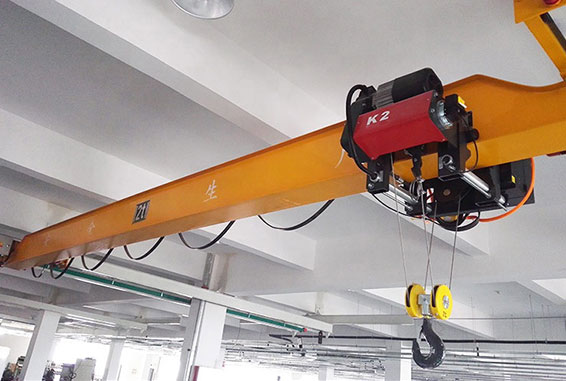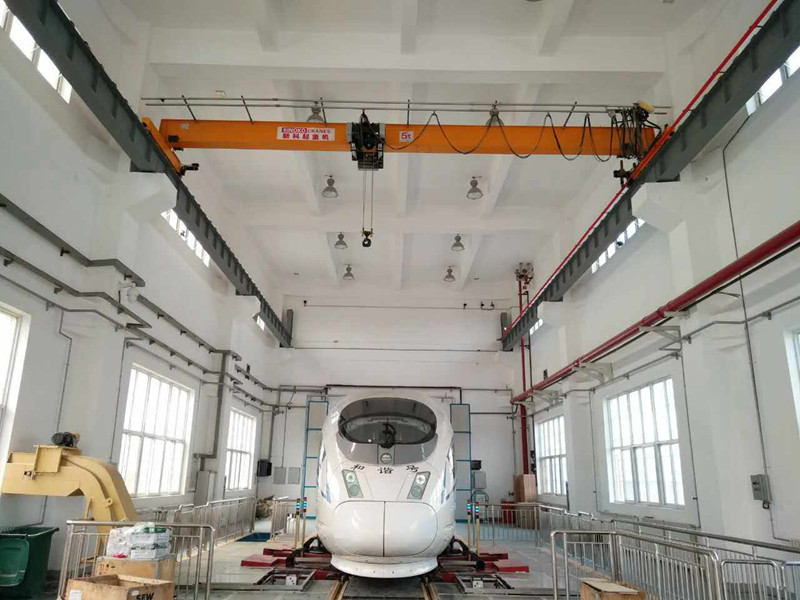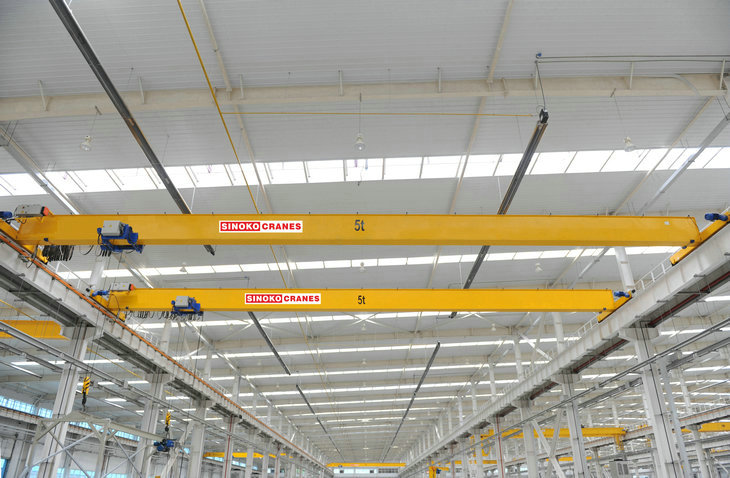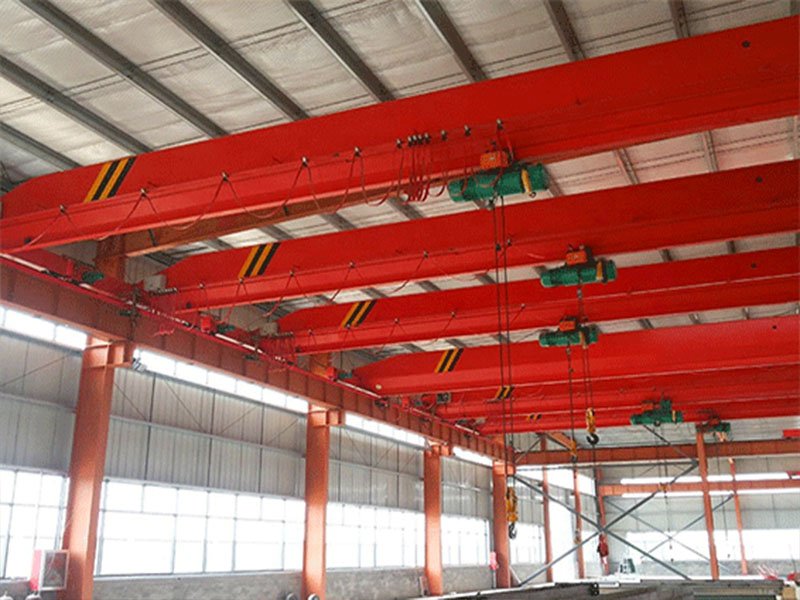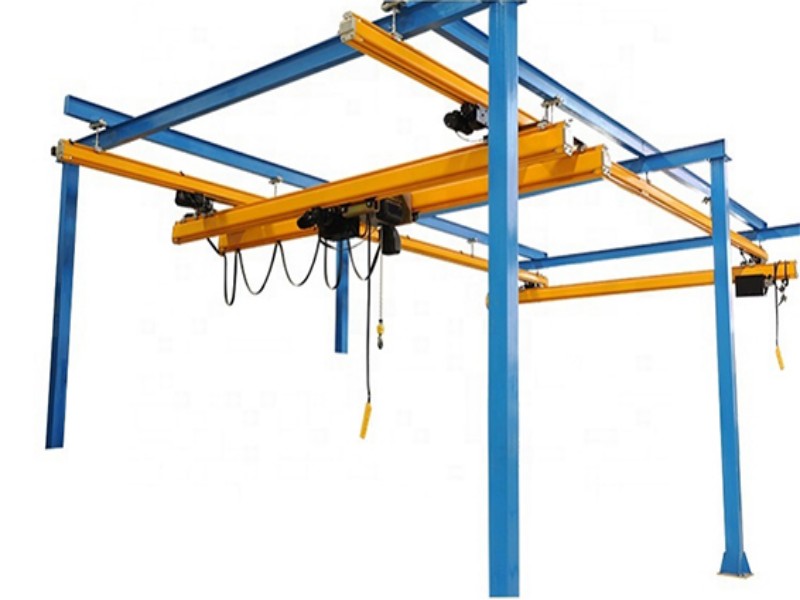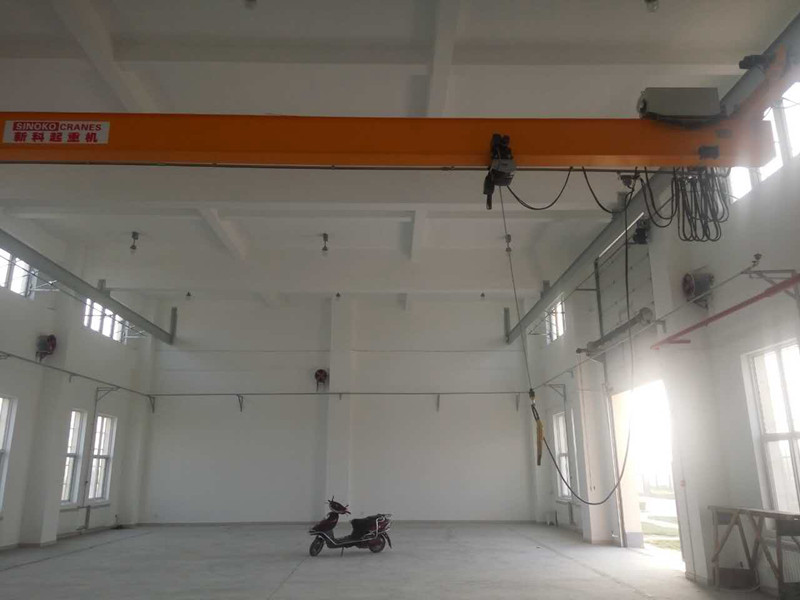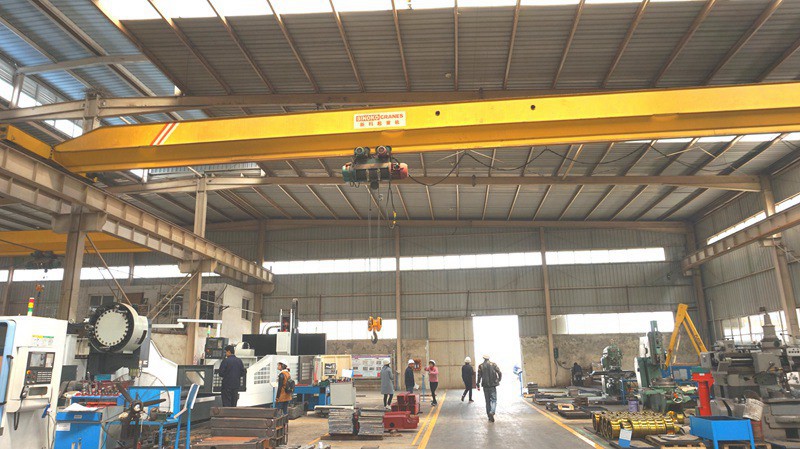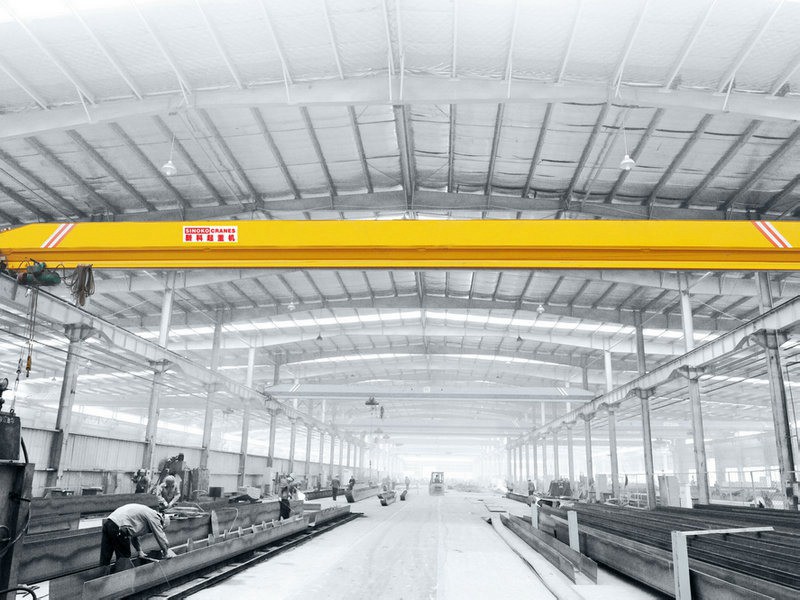Featured Single Girder Overhead Cranes
Single beam overhead crane including single main girder, end beams, hoisting mechanism, trolley traveling mechanism, and electrical equipment, featuring a compact structure and stable operation. This type of crane can be top running style or underhung crane style to match different needs.
Underhung Monorail Cranes
Sinokocrane is one of the best Hoist Crane Supplier & Manufacturer Company in China, supply high quality underhung monorail cranes at competitive prices. Available in 3 ton 5 ton 10 ton etc. Get a free quote.
Learn More Get a QuoteTop Running Single Girder Bridge Crane
Top Running Single Girder Bridge overhead crane manufactured with Europe design, The max. capacity of Sinoko cranes is 80t. It provides a good experience and save your cost.
Learn More Get a QuoteLow Headroom Single Girder Overhead Crane
The Euro-type low headroom single girder overhead crane is specially designed by SINOKO crane and it is different from the old type domestic crane. It has more advanced performance and higher working efficiency.
Learn More Get a QuoteHoist Overhead Crane For Sale
LD Traditional Overhead Hoist Crane Single Girder has the advantages of compact appearance, light weight, low wheel pressure, stable running speed, low noise, and convenient installation and maintenance. Get a free quote.
Learn More Get a QuoteMonorail Suspension Overhead Bridge Crane System
The KBK suspended monorail crane in the KBK light crane system can be tailored to your specific needs for linear aerial handling. By assembling different options, unique advantages can be demonstrated.
Learn More Get a QuoteHot Selling Tonnage Of Singler Girder Overhead Cranes
Overhead Cranes can be categorized based on their lifting capacity into light, medium, and heavy cranes. Different lifting capacities cater to various scales and types of industrial projects, allowing customers to select the appropriate crane based on their load requirements.
Overhead Crane 10 Ton
Single Girder Bridge Crane - Sinokocrane is working on the 10 ton European single girder overhead cranes production for more than 10 years and leads the crane industry trends with advanced vision.
Learn More Get a Quote15 ton Overhead Crane
Sinoko 15 Ton Overhead Crane adopts reliable motors and accessories to ensure high quality and safe work. Visit us today for more information.
Learn More Get a QuoteOverhead Crane 20 Ton
High-quality 20-ton overhead crane, perfect for heavy lifting and long-lasting performance. Contact us now for special offers!
Learn More Get a Quote
FAQs
Generally the crane delivery time is 20 to 40 working days, electric hoist lead time is 15 working days, jib crane is about 20 working days.The delivery time will be longer if the product is customized according to special requirements.
We have ISO quality management system certificate, our products have passed CE certification, our crane products can enter the EU market;
In addition, we can do third-party inspection or certification according to your requirement;
Our marine winches can do DNV, ABS, BV etc. Classification Society Certification.
The steel structure of our products is generally packaged with plastic film to protect it from rain.
Electrical and other smaller parts are packed in standard export-use non-fumigation wooden boxes or plywood boxes, and are reinforced with iron nails or steel plates to prevent damage in collisions.
We can provide 7*24 online service, and engineers can provide remote guidance.
If the problem cannot be solved, we can send an engineer to the site for the installation.
We have two types of cranes with different standards, the Chinese national standard and the European standard. According to the requirements of different clients, we provide different crane products.
The Chinese standard cranes are widely used and cost-effective, while the European standard ones are maintenance-free products, and easy to operate. They are more convenient, better performance, and can save maintenance costs.
The frequency converter is used to adjust the speed of each mechanism to reduce the influence of inertia, so that the smoothness of crane operation and lifting can be greatly improved.
For export products, we usually choose the brands such as Schneider, Siemens, ABB, etc. The quality of these brands is guaranteed.
It is easy to find after-sales service centers in the local area, and replacement parts are easy to purchase.
The work duty of the crane is determined by the load status and the number of cycles. It is not that the larger the lifting capacity, the higher the working level.
The more frequent the use, the closer the lifting weight is to the rated lifting capacity, the higher the working level.
In order to ensure the corrosion resistance of the crane, we will perform the following treatments:
Firstly, for the steel plate of the crane, we will make shot blasting and spray epoxy zinc-rich primer painting after cutting.
Secondly, there will be primer coat, middle coat, finish coat, three layers painting totally. All of them have high corrosion resistance, strong adhesion features, and a total thickness of 105 micron to ensure that it reaches the ISO standard derusting grade Sa2.
Finally, we will design rain cover for motors, electrical appliances, and lifting parts to avoid the entry of rainwater.













